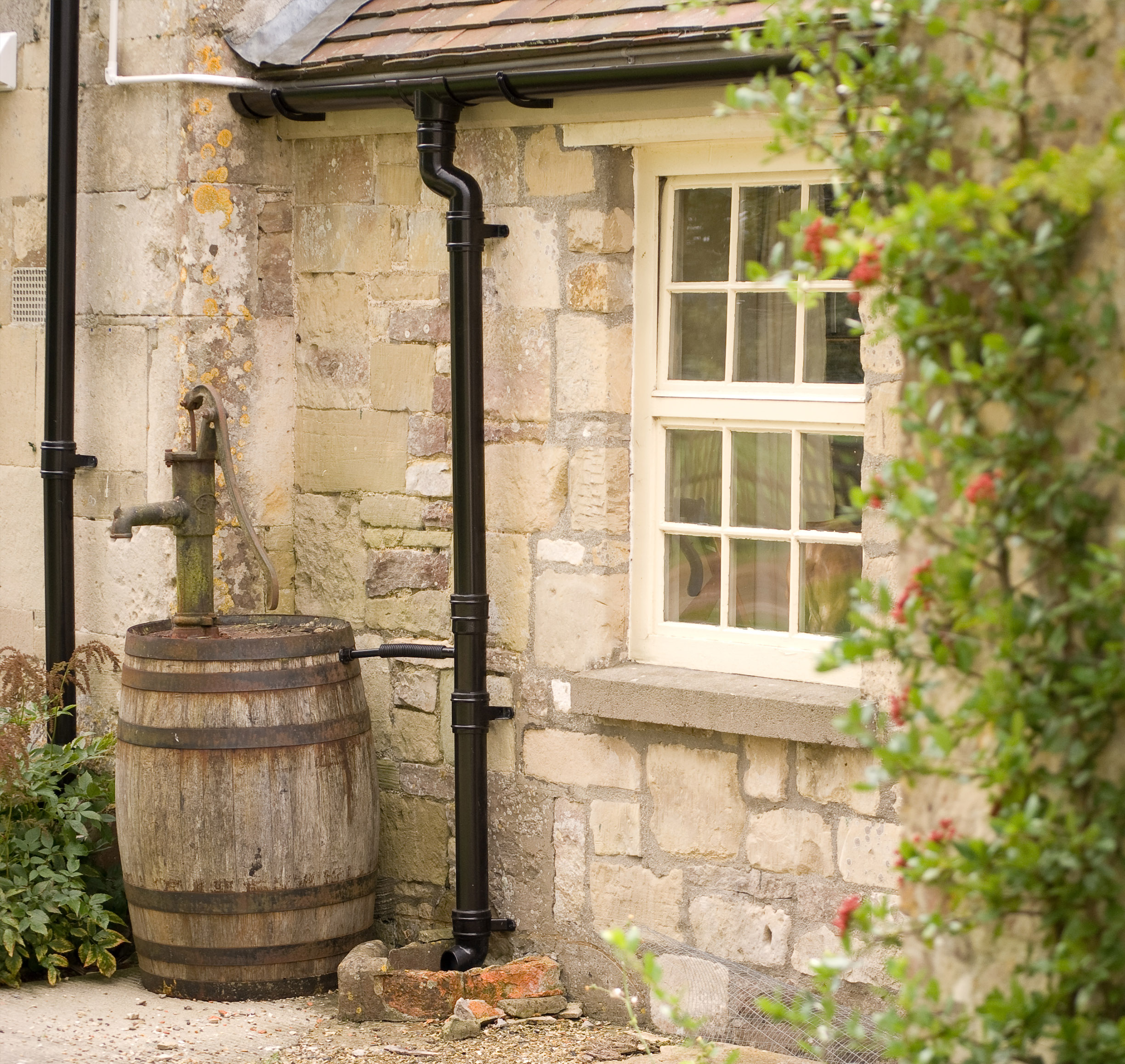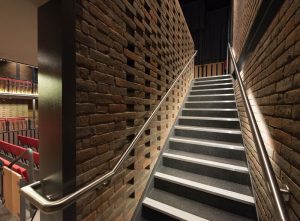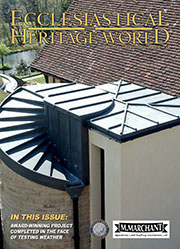Rainclear listened and added to their Galvanised Steel Rainwater Range
 Rainclear pride themselves on offering the very best customer service and a wider choice of sizes, profiles and colours with Next Day delivery - so they have not only increased their stock ranges considerably over the past 12 months but have also, in response to requests, added a few useful accessories to the stylish and affordable Galvanised Steel Rainwater range, for example: -
Rainclear pride themselves on offering the very best customer service and a wider choice of sizes, profiles and colours with Next Day delivery - so they have not only increased their stock ranges considerably over the past 12 months but have also, in response to requests, added a few useful accessories to the stylish and affordable Galvanised Steel Rainwater range, for example: -
Read more: Rainclear listened and added to their Galvanised Steel Rainwater Range
St Wilfrid's in Scrooby gets 100 year old clock back on time
 Yorkshire-based Bygone Times, who specialise in antique clock restoration and repairs, recently undertook a repair project at the Grade II listed St Wilfrid's Church in Scrooby, Northamptonshire.
Yorkshire-based Bygone Times, who specialise in antique clock restoration and repairs, recently undertook a repair project at the Grade II listed St Wilfrid's Church in Scrooby, Northamptonshire.
Read more: St Wilfrid's in Scrooby gets 100 year old clock back on time
The York Handmade Brick Company wins prestigious health and safety award
 The York Handmade Brick Company, based at Alne, near Easingwold has won a prestigious award for its outstanding health and safety record.
The York Handmade Brick Company, based at Alne, near Easingwold has won a prestigious award for its outstanding health and safety record.
The award, presented by the British Ceramic Confederation, recognises the crucial work that The York Handmade Brick Company has done in enhancing workplace safety over the years.
For the last two decades the family-run company has been fully committed to ‘The Ceramic Industry Health and Safety Pledge’, a bold industry wide promise to engage in a process of continuous improvement in health and safety.
Read more: The York Handmade Brick Company wins prestigious health and safety award
Grants for the conservation of books and manuscripts
 The next closing date for ChurchCare Grants for the conservation of books and manuscripts is Monday 22 May 2017 and applications will be considered from anglican churches in England.
The next closing date for ChurchCare Grants for the conservation of books and manuscripts is Monday 22 May 2017 and applications will be considered from anglican churches in England.
Historical books and manuscripts, when in the care of the parish, are eligible for grant aid. Modern printed books cannot be considered.
Read more: Grants for the conservation of books and manuscripts
Award sponsors have taken the lead in battery recycling
 The front cover of our latest issue shows the roof of the London Oratory, the magnificent Roman Catholic Church in the Diocese of Westminster. The project to reroof the building was the winner of the Lead Contractors Association’s prestigious Murdoch Award in 2013.
The front cover of our latest issue shows the roof of the London Oratory, the magnificent Roman Catholic Church in the Diocese of Westminster. The project to reroof the building was the winner of the Lead Contractors Association’s prestigious Murdoch Award in 2013.
Martin UK Roofing Systems Ltd, who carried out the commission, used BS EN 12588 rolled lead from ALM, part of the 2iM Group, which again sponsored this year’s Murdoch Awards to recognise the UK’s very best in leadwork contracting. As a niche competition open only to specialist contractors, the awards highlight restorations on some of the country’s most iconic buildings, and also some of the smaller, less fashionable, but no less detailed projects.
ALM’s rolled lead sheet is now produced using material recovered from car batteries by another 2iM Group company, Envirowales. The group also includes Jamestown Metals Glasgow, Jamestown Resources Dublin and Royston Lead Barnsley.
Read more: Award sponsors have taken the lead in battery recycling
Crompton & Shaw War Memorial, Oldham
 The Crompton & Shaw Memorial was commissioned by the Crompton War Memorial Committee in 1919 and the bronze statue was made to a design by Richard Reginald Goulden. It sits on a granite plinth and depicts a male figure protecting children from marauding creatures. Today the Memorial is Grade II Listed.
The Crompton & Shaw Memorial was commissioned by the Crompton War Memorial Committee in 1919 and the bronze statue was made to a design by Richard Reginald Goulden. It sits on a granite plinth and depicts a male figure protecting children from marauding creatures. Today the Memorial is Grade II Listed.
Heritage Project Contracts was appointed by Oldham Metropolitan Borough Council to undertake conservation work to the Memorial. It had been previously restored in the 1970’s when the original dark patina had been removed by abrasive means during treatment. The previous work was beginning to fail with corrosion occurring to the bronze beneath.
Another busy year sees heating specialists in action across the country
 Christmas worship will be a more comfortable experience for the congregation at St Mary’s Without-the-Walls in Handbridge, Chester. Stoke-on-Trent heating specialists Mellor and Mottram completed the installation of a new system in the 19th-century building at the beginning of November, allowing worshippers time to get used to the new-found warmth before Advent.
Christmas worship will be a more comfortable experience for the congregation at St Mary’s Without-the-Walls in Handbridge, Chester. Stoke-on-Trent heating specialists Mellor and Mottram completed the installation of a new system in the 19th-century building at the beginning of November, allowing worshippers time to get used to the new-found warmth before Advent.
The church was built in 1887 to replace the original St Mary’s On-the-Hill, which is now a heritage centre inside the city walls.
The new system comprises two gas boilers from Rinnai, the award-winning manufacturer based in nearby Runcorn. The boilers feed radiators from the Jaga range, featuring low surface temperature for added safety of the congregation.
Read more: Another busy year sees heating specialists in action across the country
Rainclear Rainwater Systems January Sale
 Rainclear Systems, the UK’s leading online retailer and stockist of metal rainwater systems would like to wish everyone a happy new year in 2017 with an extra 10% off all its rainwater systems.
Rainclear Systems, the UK’s leading online retailer and stockist of metal rainwater systems would like to wish everyone a happy new year in 2017 with an extra 10% off all its rainwater systems.
Rainclear already offer to help with a take-off service from your architect drawings, ensuring you purchase all the right components at the right capacity for your home and the level of rainfall in your location.
Christmas entertaining – be prepared with a Mogo folding table!
 At this time of year, you may well be thinking about upcoming gatherings of friends and family, especially if you plan to host a party yourself and cater to a lot more people than you usually would. It’s great to be surrounded by people at Christmas, but how can you possibly get everyone round the dinner table?
At this time of year, you may well be thinking about upcoming gatherings of friends and family, especially if you plan to host a party yourself and cater to a lot more people than you usually would. It’s great to be surrounded by people at Christmas, but how can you possibly get everyone round the dinner table?
Mogo Direct has the perfect solution for you. They offer a range of brilliant value, premium quality folding tables which are ideal for welcoming more guests than usual, at home or at your event venue. Their main range covers plastic, wooden and metal folding tables in all shapes and sizes. Round, square and rectangular designs are available with centre-folding, adjustable legs and other handy features available.
Read more: Christmas entertaining – be prepared with a Mogo folding table!
The Leadworker Register - putting skills at the heart of the industry
 The Lead Sheet Association has been developing and running successful training and qualification initiatives for many years to help ensure that standards of leadwork are high across the construction industry.
The Lead Sheet Association has been developing and running successful training and qualification initiatives for many years to help ensure that standards of leadwork are high across the construction industry.
As well as delivering courses at its Training Centre in East Peckham, Kent, the LSA has also been working in collaboration with the Lead Contractors’ Association to set up the Leadworker Register.
Why create a Register?
One of the reasons the LSA felt the creation of the Leadworker Register was important was for many years it has been asked by a range of people to provide details of competent leadworkers. It felt the fairest way to do this was through a Register which is transparent and allows contractors, specifiers, architects and others in the construction industry to find the level of skills needed for the job in hand.
Read more: The Leadworker Register - putting skills at the heart of the industry
Alternative choices for music accompaniment in today’s church
Many churches are finding it increasingly difficult to obtain the services of competent, reliable musicians to accompany congregational singing, yet for a huge number of church denominations communal singing forms an ongoing, popular and significant part of their service format. Anyone who has been to a service where the congregation hesitantly sings unaccompanied will be aware of the importance of a good musical accompaniment.
In recent years new styles of contemporary worship music have achieved popularity. While it is true that some churches now only sing contemporary songs (often accompanied by a worship band), most choose a middle path, adding favourite modern songs to their traditional hymn repertoire. However, the musical skills and instrument(s) required to effectively accompany contemporary music are often quite different to those for traditional church music, thereby exacerbating the problem of finding suitably skilled musicians.
What factors are important?
In order to evaluate accompaniment options objectively, it is important first to understand the musical requirements specific to the successful accompaniment of congregational singing. Unlike the passive task of listening to music, several variables have to be right in order to promote enthusiastic, confident singing in church. For any given tune, the speed, pitch, number of verses – even the length of the pause between verses – will need to be as close as possible to how your congregation is accustomed (or wants) to sing it. An often overlooked fact is that each congregation develops their own “style” over time, so suddenly demanding they sing everything differently from now on is rarely successful!
What options are available?
Essentially there are three categories of product: audio recordings, midi files or a portable church music player unit. These are discussed below:
Audio recordings (audio CDs and mp3 files)
The use of audio recordings is nothing new. Poor-quality tape recordings of hymn tunes were a feature of many crematoria as far back as the 1960s. Although better than nothing, audio formats were (and still are) generally unable to offer the flexibility needed for effective accompaniment of congregational singing. Advances in digital recording techniques now afford a much better quality of sound, but the lack of key requirements as outlined above, coupled with the inherent clumsiness in manipulating multiple audio tracks during a church service, have prevented widespread popularity of the use of audio CDs and mp3 files.
Other problems associated with audio format recordings are lack of adequate repertoire, the often unwanted presence of the recorded local acoustic, and the inevitable performance preferences of the musicians involved, e.g. tempo, “artistic interpretation” of the words etc. In other words, the chances of an audio recording matching how a particular congregation usually sings that tune are slim.
Midi files
A purely digital recording format, the midi file, opened other avenues in the 1980s. Again however, many of the same drawbacks and inflexibility in playback as are associated with audio formats could not easily be overcome. Self-contained midi file players became available, as did collections of hymn tunes in various midi formats. For non-technically minded end users the difficulties of changing the number of verses and orchestration remained while,since midi file players were never designed for church use, they often didn’t have any usable pipe organ sounds for playing traditional hymn tunes and Christmas carols. Another fundamental in the lack of success of this format was, again, lack of sufficient repertoire to fully cover a typical church year.
Church music players
Various companies have attempted to provide a solution in the form of a dedicated midi-based player unit, pre-loaded with a fixed selection of hymn tune recordings, ever since the 1980s. Most were little more than a midi file player with some midi files built in, and all lacked flexibility. Although of some use to missionaries etc, the limited repertoire of tunes and poor sound quality of these early attempts meant they fell far short of providing an effective solution for a church.
Responding to this unsatisfactory situation, Hymn Technology Ltd took on the challenge of designing a completely new portable system, purpose-built for the accompaniment of congregational singing, which could successfully substitute in the absence of a good musician and/or instrument. The result, the ground-breaking Hymnal Plus, offers tremendous versatility coupled with unmatched ease of use and a huge, open-ended repertoire.
What’s different about the Hymnal Plus?
Ease of use
Operation of the Hymnal Plus is very intuitive using the large touch screen display, and users need no musical or technical knowledge. Essential variables such as speed, pitch, number of verses and length of pause between verses can all be altered with simple, dedicated + and – buttons, so playback can easily be adjusted to suit the congregation. The Playlist feature enables storage (and naming) of all the music for services in advance, for playback whenever required. Personal customisations (adjustments to speed, pitch etc) are all stored with each tune in a playlist, so button-pushing during a service is reduced to pressing the Start button at the appropriate times.
Other unique features include a hymn search facility and on-screen display of first line of words and tune name. An infra-red remote control handset is included for added accessibility.
Repertoire
Pre-loaded with a broad-based repertoire of at least 2,750 tunes*, both traditional and contemporary (including a collection of popular incidental music and music for weddings and funerals), the Hymnal Plusis easily upgradeable over time and owners are able to purchase additional repertoire as needed.
* Actual number varies by region
Sound quality
The Hymnal Plus enables the user to choose the orchestration for any particular choice of tune. The internal sound engine has been custom designed specifically for church use, offering a stunning range of realistic pipe and electronic organs and orchestral voices. Over 200 preset orchestrations make sound selection child’s play. A drum rhythm backing can also be added to any orchestration when appropriate.
Flexibility
For complete convenience the Hymnal Plus also plays user-supplied midi and mp3 files, which are stored on its compact flash memory card. These files can also be included as items in playlists.
Options
Optional features include:
- Video output for lyrics and text display via projector or TV monitor (with auto-advance of lyrics)
- Qwerty keyboard for direct text entry
- Soft carry case
- Rechargeable NiMH battery pack
- Psalm Player, for interactive accompaniment of psalms etc
Michelmersh wins the Architect’s Choice Award for Whitty Theatre
 On November 10th the Brick Development Association hosted the prestigious 40th Brick Awards ceremony which entailed a special accent of glamour for the ruby celebration that rewards exemplary brick design and construction. Michelmersh had yet another successful year, grasping the accolade of Architect’s Choice award for the Whitty Theatre designed by van Heyningen and Haward Architects.
On November 10th the Brick Development Association hosted the prestigious 40th Brick Awards ceremony which entailed a special accent of glamour for the ruby celebration that rewards exemplary brick design and construction. Michelmersh had yet another successful year, grasping the accolade of Architect’s Choice award for the Whitty Theatre designed by van Heyningen and Haward Architects.
Niamh Cronin, Project Architect at van Heyningen and Haward Architects, said: “The volume of the auditorium at the Whitty Theatre is expressed in brick both externally and internally. We looked at dozens of bricks to find the right colour and texture appropriate for the heritage setting of the School’s grade II listed house as well as a brick that would create a warm and intimate atmosphere within the theatre auditorium. As we could not find a standard brick to meet our requirements, a bespoke Luckley mix from the Freshfield Lane Synthesis range was created especially for the project. The building sits elegantly within its context, and creates a state of the art theatre for students and the local community. It has been a fantastic project to work on, and winning a brick award for the project is an honour to be proud of.”
Read more: Michelmersh wins the Architect’s Choice Award for Whitty Theatre
Hymnal Plus - the ultimate worship music solution
 Hymn Technology Ltd was established in 1995 to market and distribute an American electronic hymn player in the UK. Directors Martin Phelps and Alan Kempster, who between them had amassed over 50 years experience in the organ industry, saw the huge potential for a unit that could accompany congregational singing in the absence of either musician(s) or instrument(s).
Hymn Technology Ltd was established in 1995 to market and distribute an American electronic hymn player in the UK. Directors Martin Phelps and Alan Kempster, who between them had amassed over 50 years experience in the organ industry, saw the huge potential for a unit that could accompany congregational singing in the absence of either musician(s) or instrument(s).
The US manufactured product sold well, but it became apparent after a while that churches needed a far more advanced and complete solution to what was clearly becoming a huge problem - the lack of competent musicians in churches up and down the land who were prepared to make the commitment to be available every Sunday.
Read more: Hymnal Plus - the ultimate worship music solution













